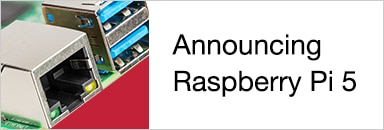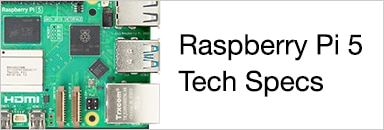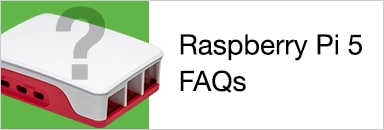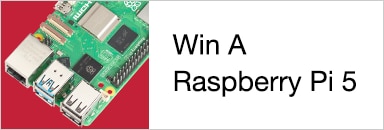 |
This audio card will push your Pi.
The Wolfson Audio CardWolfson Audio Card has taken a good amount of time to come forth from Wolfson Microelectronics and with decent reason. They want to make sure that they have it right and something that you can work with. As with any audio setup it takes a little time to optimise and get it setup correctly, but once you're there then you have a potentially powerful portable audio sensation in your hands. The audio codec with digital signal processor for voice, WM5102 even won an award in 2013 for innovation from the Institute of Engineers and Technology (IET) The package for the Wolfson Audio Card comes in the standard Raspberry PiRaspberry Pi add-on box that you may be used to if you've picked up a GertduinoGertduino or Pi FacePi Face. The box clearly informs you as to the features the device comes with and where to go for more information. Chances are you're going to need it.
Upon opening the packaging you're presented with the regulation anti-static bag containing your card along with a slip of paper covering regulations compliance and rather curiously, a plastic screw. It seemed odd at first why there was a lone screw in the box, but once I fitted the audio card to the Raspberry Pi it became clear.
To ensure that the boards push/pogo-pins make contact with the Raspberry Pi, using an unpopulated header next to the GPIO breakout it needs the screws to make sure that the board is pushed securely to the Pi. I found it stranger that it wasn't a metal screw, but this makes sense after making sure that it was fully in, it potentially touches on some on-board circuitry and we wouldn't want any short-outs to happen.
Before getting started with the setup, make sure that you have any USB devices that you're going to use with it, plugged in. I had the unfortunate experience later when I exchanged my USB devices for others that the Raspberry Pi restarted. There is warning of using USB hubs in the user manual so I suspect this is related and possibly an issue with power.
The best choice to get started is to write the SD Card image provided on element14 to get started with the card, there are a number of modifications and hacks to the stock Raspbian kernel and installed modules that have been necessary to get the device to work. |
If you're running Windows then you can download Win32DiskImager to write the image to the SD Card, so long as you have Administrative rights and a way to connect your SD Card to your computer. Or if you're running Linux you can use the dd command to write it to your /dev/<device name> card. If you need to check this, then typing 'man dd' at a terminal will help you with the dd command, and typing 'dmesg' at a terminal will help you to determine what your SD Card is referred to as.
You have the option of downloading and compiling the kernel/driver source code and apply the patches to it to get it to work and then install the modules; but unless you're comfortable with cross-compiling on a faster computer and debugging any problems that occur you're going to be waiting a long time, not just for compiling on your Pi but also downloading the source files for the Raspbian kernel. Hopefully Wolfson Microelectronics or a member of the community will bring out a Raspbian package to install from or the changes will be integrated into the Raspbian OS by default in the future.
*Edit*: Ragnar Jensen has pulled out the compiled kernel and modules for the Wolfson Audio Card along with the use case scripts and put them into a compressed file that you can extract on your existing Raspbian installation. Note that this will lock you down to using a specific kernel that will not be updated when you update Raspbian, you .
The SD Card needs to be of Class 6 or higher, especially if you want to read/write high quality audio, of note is that the Raspbian installation, which I downloaded at least, has been modified by Wolfson and attempts to overclock the Raspberry Pi to 900mhz with slight voltage alteration. This can be disabled in the config.txt in the /boot/ folder by finding the relevant lines and removing them.
So, let's test it by playing music! When you have booted your Pi with your audio card attached and SD Card setup you will want to open LXTerminal on the desktop, then type one of the relevant commands, assuming that you are in the /pi/home directory, based on how you want to listen to your music:
| Command | Description |
|---|---|
| ./Playback_to_Headset.sh | If you want to use the black headphone jack |
| ./Playback_to_Lineout.sh | if you want to use a set of powered speakers from the LineOut jack |
| ./Playback_to_Speakers.sh | if you want to use a set of speakers powered from/connected to the header(s) on the board |
| ./SPDIF_playback.sh | Use the S/PDIF digital connection on the board |
These scripts are located in the 'pi' user account home directory (/home/pi) and they are just a set of commands for setting up AlsaMixer (aka amixer, which PEarle has gone into more detail in his tasty write-up here: Wolfson Audio Card - Command Line recording ) to use the relevant device for outputting the audio. Once you're familiar with Alsa and the scripts you can edit these as you see fit, they commit themselves such that they're persistent after a reboot of the Pi.
Once you have setup your output, we can run Music Player from the desktop, the playlist is already populated, then just play away. These audio files are in a very nice .flac format which is a non-loss audio compression standard. For me there was some delay before the play started, and there were gaps, clicks and pops. This is because I was using a Class 4 SD Card, I changed this for a Class 6 and played just fine. It still wasn't very fast on occasion though, with this particular Raspbian installation there is a CPU usage monitor on the taskbar which was regularly sitting at 100% usage.
Now, to record on the Wolfson Audio Card is a different matter, it isn't straightforward to install audio software such as Audacity and just record. The best way to check it is to run a command from the terminal again. To setup AlsaMixer using the scripts you can choose one of the following, assuming that you are in the /pi/home directory:
| Command | Description |
|---|---|
| ./Record_from_Headset.sh | Records from the boom mic' on a headset |
| ./Record_from_lineIn.sh | Records from a powered/amplified device/microphone on the line in jack |
| ./Record_from_DMIC.sh | Records from the stereo microphones that are situated on the Wolfson Audio Card |
| ./SPDIF_record.sh | Records from the digital S/PDIF connector |
For recording, unfortunately I do not have any S/PDIF equipment, or a boom microphone style headset, so I mainly tested the on board digital stereo microphones! I can confirm that they're definitely in stereo, record quite clearly with minimal post-cleanup, but the channels were opposite to how they are marked on the board (left was right and right was left). Which is just a minor point really.
|
In the picture to the left, in the audio file I recorded via command line and then loaded into Audacity you can see where I spoke into each left/right channel individually at an intentional offset.
You can also see what the record quality is like for silence up until that point, initially there is some raised audio level and the click of initialisation. It is probably a good idea to bare this in mind when you're recording and to do some post cleanup depending on what you're using it for. |
The method suggested to record audio on the Wolfson Audio Card is specified in each of the .sh files, which you can run the command "less ./Record_from_DMIC.sh" to read. I didn't manage to get Audacity to record from the card directly as it only had options for S/PDIF - I am assuming this is because of how Audacity integrates with Alsa and that this is not currently setup in an ideal way even by switching with the scripts (use cases) provided. Edit: It's worth reading Ragnar's post below in the comments regarding using Audacity with the Wolfson Audio Card, in particular the post on altering the use case for the on board digital microphones (DC offset on microphones and workaround.).
All in all it's a nice little board but it's going to take a bit of polish and work from Raspbian/the Community/Wolfson microelectronics to get the process streamlined, but I'm thankful we now have the opportunity to do so! The results are definitely worth it.









Top Comments